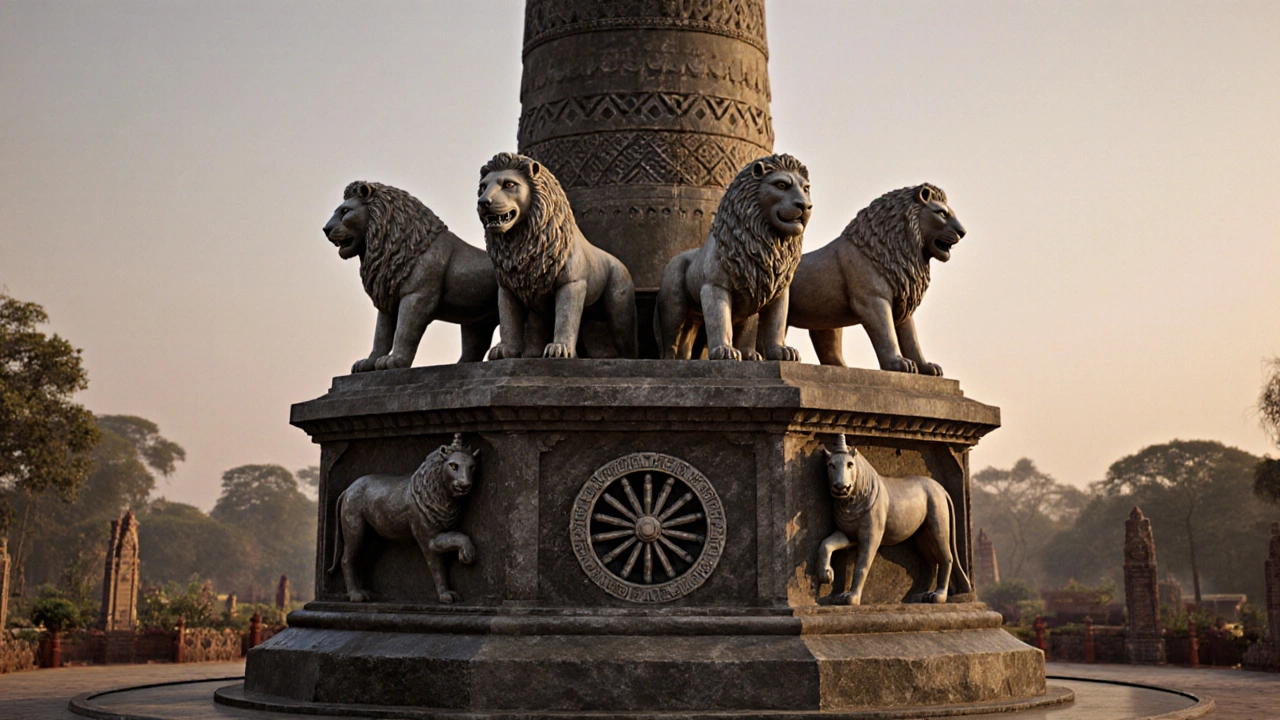Lion Capital of Ashoka: History, Symbolism & Significance
When you look at Lion Capital of Ashoka, the four‑lion sculpture that crowns India’s national emblem. Also known as Sarnath Lion Capital, it represents power, unity and Buddhist ideals. The monument was erected by the Ashoka Empire, the 3rd‑century BCE Mauryan dynasty that spread Buddhism across the subcontinent. Its design later inspired the Indian National Emblem, the official seal used by the Government of India since 1950. The lions sit on a base of a wheel (the Ashoka Chakra) and animal figures, both of which convey Buddhist symbolism, ideas of dharma, enlightenment and the cyclic nature of life. In short, the Lion Capital of Ashoka brings together art, politics and religion in a single image.
Why the Lion Capital matters today
Understanding this monument helps you read many modern Indian contexts. For instance, the Sarnath, the ancient Buddhist site where the capital was originally placed, is now a hub for heritage tourism and scholarly research. The capital’s motifs appear on currency, passports, and official documents, so spotting them can hint at the country's values. Moreover, the Ashoka Chakra on the national flag mirrors the wheel under the lions, reinforcing the link between historic rulership and contemporary democracy. When designers create logos or branding that echo the capital, they tap into a visual language that instantly signals authority and cultural pride.
Below, you’ll find a curated set of articles that dive deeper into each of these angles. From detailed looks at how the Ashoka Empire used stone art to spread Buddhist teachings, to practical guides on using the Indian National Emblem in modern design, the collection covers history, symbolism, and everyday relevance. Whether you’re a student, a traveler, or just curious about India’s iconic symbol, the posts ahead give you concrete facts, handy tips, and fresh perspectives to enrich your understanding of the Lion Capital of Ashoka.
Discover why the Lion Capital of Ashoka is India’s national emblem, its history, design meaning, and how it differs from the flag and other symbols.
More